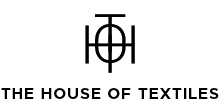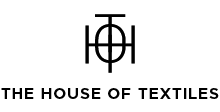10 Factors to Consider While Buying the Best Velvet Fabric
When choosing design fabrics for our fashion design projects, we are always drawn to velvet. It is the most popular option among people because to its smooth, silky texture. The majority of people adore its plush texture, warmth, and softness. There are a number of things to consider while choosing velvet before determining if it's the best option. When choosing whether velvet is the correct fabric for you, consider your application, tolerance, personality, and durability needs.
Velvet is a popular design fabric right now since it is more expensive, has a beautiful sheen, is thick enough to be used for clothing and furnishings, and is different from other materials.
What is Velvet?
Velvet is an extraordinarily shiny fabric composed of a mixture of silk, polyester, rayon, and viscose. Velvet does not have the ability to stretch, which makes it an excellent fabric to utilize as its quality does not deteriorate over time.
Blends of natural and synthetic fibers are used in the creation of velvet, a luxurious fabric. Because of its composition and weaving technique, design fabric is the most expensive fabric among velour, velveteen, and velvet.

Different Types of Velvet Fabric
- Plain velvet (cotton)
You should choose simple velvet fabric online, sometimes referred to as cotton velvet, if you are looking for a tiny elasticity in the fabric. Though it is a little heavier than other types of velvet, this fabric does not have a shiner texture.
- Stretch velvet
As the name implies, stretch velvet is a fabric that can be stretched. Stretch velvet is given a hint of sheen by combining a mixture of silk into it. In order to add even more stretch factor, some even add spandex to this cloth during production.
- Embossed velvet
Did you know that a heat stamp is used to create embossed velvet? In order to give the fabric some texture or prints, pressure and heat are applied to it. This kind of velvet is typically utilized in fashion design. So, everything is justified by the name.
Factors to Consider While Buying Velvet
10 criteria listed below may assist you in choosing the ideal velvet fabric:
- Fabric Weave
The two most popular types of weaving for velvet fabrics are pile and flat weaves. Finding the ideal velvet fabric for upholstery can be aided by figuring out the precise weave type based on its intended use. Tight weave fabrics typically last longer than loose weave ones. Furthermore, woven materials have a longer lifespan than printed materials.
- Thread Count
A fabric's thread count is the number of threads per square inch. A higher thread count velvet fabric provides greater strength and longevity. It also suggests that the cloth is densely woven, which means it will have superior abrasion resistance. Therefore, the ideal velvet fabric is typically the one with a high thread count.
- Weight of the Fabric
The weight of your velvet fabric online is a good indicator of how well it has held up over time. Compared to other common fabrics, fabrics with a high thread count and dense weave have a longer lifespan. Furthermore, a heavier-weight pile is considered the ideal velvet fabric for upholstery due to its outstanding durability rating.

- Durability Rating
When choosing the ideal velvet for upholstery, it's crucial to take the "Velvet's Rub Test" into account. Tests such as the Wyzenbeek and Martindale measure the fabric's wear and tear, which helps to determine how durable it is. The ideal velvet fabric online is one that has been rated for at least 15000 rubs.
- Pet-Friendliness
Even though your pet is your best buddy, velvet materials aren't a suitable match for each other. Low-pile materials like microfiber or synthetic velvet will work wonders if your pet is a "pet peeve" for your upholstery. These materials are virtually claw-proof, odor-proof, and simple to clean. It is also known that the microfiber will not pull or rip fabric.
- Fiber Type
Natural fibers, synthetic fibers, or a mix of the two can be used to create velvet fabric. Depending on the kind, each of these velvets has different qualities. Blending the two types of fibers together usually yields the best velvet fabric for upholstery.
- Fabric Grade
Velvet comes in a variety of grades. Natural fiber velvet costs more than synthetically manufactured velvet.
The two certifications given to identify the finest velvet fabric for upholstery are based on the substance used to make velvet:
- Silk Mark
- GRS (Global Recycled Standard)
- Anti-Allergic
Dust and pollen tend to be drawn to fluffy fabrics, textiles with greater thread counts, and natural blends. Another annoying duty is keeping them clean and maintaining them overall. The ideal velvet fabric for upholstery may be short-pile, smooth, or synthetic if you or a family member is allergic to dust or any other allergens.

- Resistant to Colour Fading
Dark, striking, and natural velvet materials typically fade the fastest of all textiles. You must take into account the fabric's positioning and resilience to sunlight while selecting the finest velvet for upholstery. If moving your upholstery to a different area or covering it up is not an option, you should choose velvet that is synthetic or lighter in color.
- Easy Cleaning
If you don't clean your velvet upholstery often, it can become a really difficult process. Velvet aged elegantly, according to an old proverb, but proper cleaning and upkeep are still up to us. The ideal velvet fabric for upholstery is synthetic velvet since it allows for much simpler washing.
Wrapping Up
If you are looking for velvet fabric online in unique hues and patterns, you should explore the website of The House of Textiles. We import our fabrics internationally and provide you with the best quality fabrics.
Check out our velvet fabric collection now.










